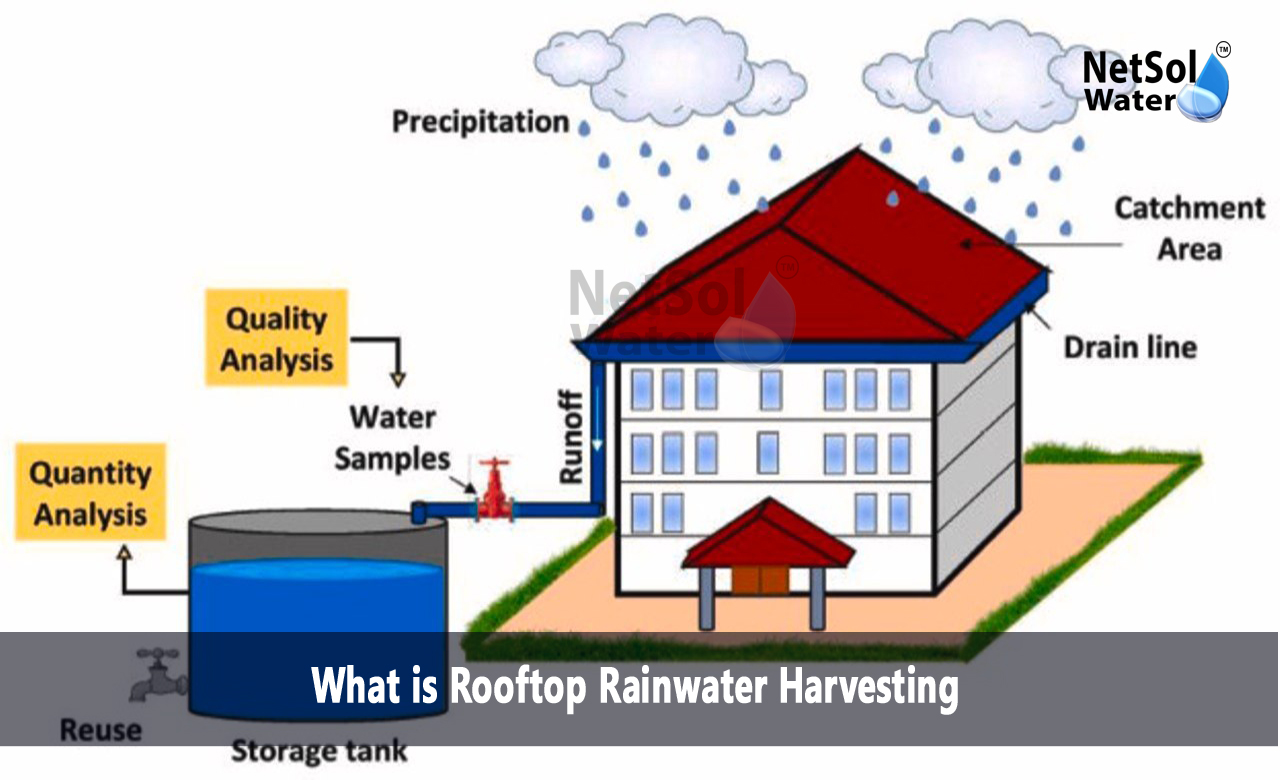What is Rooftop Rainwater Harvesting?
Rooftop Rainwater Harvesting offers a simple way to gather water during rain and use it when needed. This method captures rain from roofs and stores it for later use. Many households adopt this method to lessen their dependence on municipal water systems. It helps people save money while taking care of the environment. Homeowners use this technique to use natural rain in a smart way. The method supports the use of water in a time of need and encourages a habit of saving water. People who use this method find that they can lower their water bills and protect nature. The idea connects the natural cycle of rain with a practical solution for water shortages. It brings communities closer to nature by using rain to meet daily needs. The method shows how simple actions can lead to lasting benefits. It proves that we can use water responsibly and help the earth at the same time.
Benefits of Rooftop Rainwater Harvesting
The importance of the benefits stands clear. Let us have a look at some benefits in detail.
The method lowers water bills when households capture and store rain. Homeowners use this saved water for cleaning and watering gardens. The method cuts the need to buy water from public supplies and helps families save money. The approach protects the environment when it eases the demand on natural water bodies. It takes pressure away from local treatment plants and keeps nature clean. The method also secures water for times when rain falls less. Homeowners build a reserve of water to use in dry spells. The system stands as a backup for water shortages and gives confidence in using rain as a resource. Each benefit shows how Rooftop Rainwater Harvesting makes a difference in daily life. The advantages grow as more people adopt the method and find practical ways to conserve water.
Components of the Rooftop Rainwater Harvesting System
Let us have a look at some key components in detail.
The first part is the catchment area. Homeowners use the roof as a surface to collect water when rain falls. The shape and material of the roof affect how much water it gathers. This part stands as the beginning of the process and shapes the overall success of the system.
The next part is the conveyance system. Workers install gutters and downspouts that guide water from the roof to a storage tank. The design of these channels makes sure water flows in one clear path. This arrangement helps the water reach the storage without any loss. Each element works together to keep the flow smooth and reliable.
The following part is the storage tank. Technicians place this tank to hold the water gathered from the roof. The size and build of the tank play a role in how long the water stays clean. A proper storage unit maintains the quality of water for later use.
The final part is the filtration system. Experts add this system to clean the water before use. It takes away debris and particles to keep the water pure. Each part shows the importance of a well-built system and helps the overall process work in a reliable way.
Read: Sewage Treatment Plant Manufacturer
Installation Process for Rooftop Rainwater Harvesting
The first step is designing the system. Experts visit the property to study the roof and assess the water needs of the household. They create a design that fits well with the structure and its use. A good design makes the installation faster and more efficient.
The next step is setting up the catchment and conveyance system. Workers install gutters and downspouts to direct rainwater from the roof to the storage tank. They check that water flows in one direction and that no part of the system blocks the flow. This step makes sure the water arrives at the storage tank without loss.
The following step is installing the storage tank. Technicians fix the tank in a safe place and secure it to the downspouts. They check that the tank stands in a spot that supports its use and that it stays stable. This step completes the physical system that captures rain.
The final step is testing the system and learning maintenance. Experts run tests on the system to check that it works as expected. They then show homeowners how to keep the system clean and effective over time. This step ensures that the installation produces a working solution for using rain water when it falls.
Conclusion
Rooftop Rainwater Harvesting stands as an easy way to capture and store water during rain. The method saves money and helps protect the environment while supplying water when needed. The discussion above shows how the benefits add value, how each component works, and how the installation process makes the system efficient. Rooftop Rainwater Harvesting offers a practical solution for water needs and builds confidence in water management. If you want more details or wish to request a consultation, please get in touch. Embrace Rooftop Rainwater Harvesting to manage water better and protect our environment for future days.
Contact Netsol Water at:
Phone: +91-9650608473, Email: enquiry@netsolwater.com



